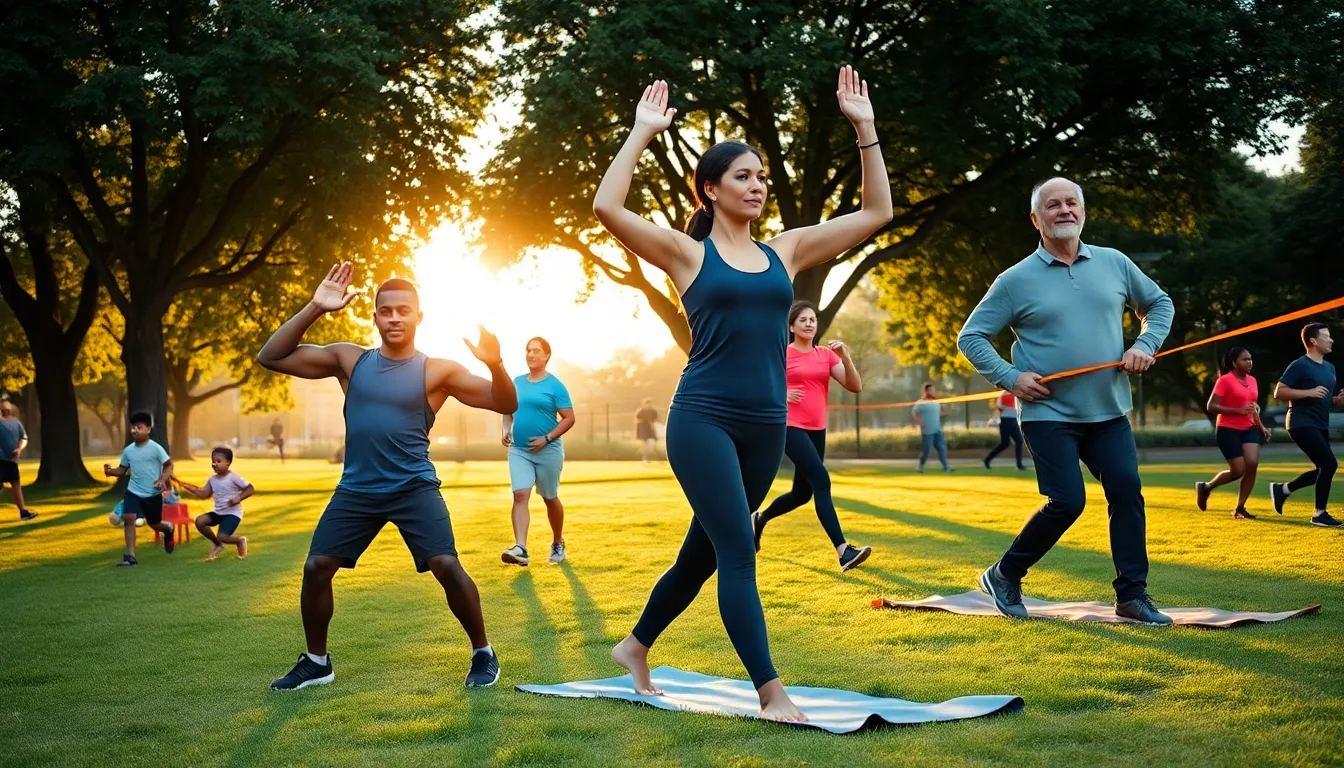Fitness training is continually evolving, driven by new insights, technologies, and a growing understanding of human performance. Today’s fitness enthusiasts look for innovative ways to stay active, engage their bodies effectively, and maintain motivation over time. The latest trends in fitness training not only focus on workouts but also interweave technology, nutrition, and community, ensuring a holistic approach to health and wellness. This article delves into the current trends, techniques, and future directions shaping fitness training.
Table of Contents
ToggleOverview of Fitness Training Trends

The landscape of fitness training has witnessed remarkable changes over the past few years. With the rise of wellness culture, individuals are more committed than ever to achieving their fitness goals. Here are some prominent trends in fitness training today:
- Functional Fitness: This training approach emphasizes exercises mimicking everyday activities, improving overall strength, balance, and coordination. This trend is especially appealing for older adults seeking to enhance mobility while reducing injury risks.
- High-Intensity Interval Training (HIIT): HIIT continues to dominate workout routines, allowing individuals to achieve maximum results in minimal time. This method alternates short bursts of intense activity with rest or lower-intensity exercise, offering an efficient way to burn fat and build endurance.
- Mind-Body Fitness: Activities that combine physical movement with mental focus, such as yoga and Pilates, are gaining traction. These practices enhance flexibility, core strength, and mental wellness, appealing to those seeking a comprehensive fitness experience.
- Outdoor Workouts: With an increased awareness of mental health benefits associated with nature, outdoor fitness classes and activities like hiking and cycling are popular for those looking to escape the gym environment.
These trends reflect a significant shift towards more inclusive, effective, and enjoyable fitness solutions.
Innovative Techniques in Fitness Training
As fitness enthusiasts seek new ways to enhance their training, innovative techniques have emerged:
- Wearable Fitness Technology: Devices such as smartwatches and heart rate monitors help individuals track metrics and optimize workouts. They provide real-time feedback, enabling users to adjust their efforts for better results.
- Virtual and Augmented Reality Workouts: Programs incorporating VR and AR are changing how users engage with their fitness routines. These technologies create immersive experiences, making workouts more captivating and interactive.
- Biofeedback Training: This cutting-edge technique assesses physiological metrics to enhance performance and recovery. For instance, incorporating sensors to monitor muscle tension can help refine techniques and prevent injuries.
- Group Challenges and Competition: Engaging in friendly competition through apps or local fitness challenges motivates individuals to push their limits. This communal approach has solidified the importance of social connections in fitness.
Technology’s Role in Fitness Training
Technology is shaping the fitness industry in profound ways:
- Personal Training Apps: Customizable apps allow users to receive tailored workouts, nutritional guidance, and progress tracking. Many platforms now offer virtual consultations with certified trainers, enhancing accessibility and personalization.
- Online Fitness Communities: Social platforms dedicated to health and fitness enable users to connect with like-minded individuals worldwide. Sharing milestones and challenges promotes camaraderie and enhances motivation.
- Artificial Intelligence (AI) in Training: AI is being increasingly integrated into personalized fitness programs. By analyzing user data, AI can develop workout regimes that adapt based on performance, preferences, and even recovery rates, making training more effective.
Technology not only simplifies access to quality training and nutrition advice but also fosters accountability and community.
Nutrition and Recovery in Fitness Training
Nutrition plays a vital role in fitness training. Understanding the importance of fueling the body correctly can significantly enhance performance:
- Macronutrients Mastery: A balanced diet focusing on proteins, carbohydrates, and healthy fats is crucial for recovery and growth. Current trends advocate for ‘eating according to activity,’ where caloric intake adjusts based on workout intensity.
- Meal Timing: Recent research highlights the importance of meal timing, consuming nutrients immediately post-workout can dramatically improve recovery times and promote muscle growth.
- Supplementation Trends: Many individuals are turning to supplements to support their fitness journeys. This includes everything from protein powders to adaptogens that help reduce stress.
Also, understanding recovery modalities, such as foam rolling and active recovery days, is essential for preventing injuries and optimizing performance.
Building a Personalized Fitness Training Plan
Every fitness journey is unique, and building a personalized training plan is essential for long-term success.
- Assessments and Goals: Start by assessing current fitness levels and establishing clear, achievable goals. This could be weight loss, muscle gain, increased endurance, or enhancing overall health.
- Tailored Workouts: Consider a mix of strength training, cardiovascular exercises, and flexibility workouts that suit personal preferences and goals. Regularly update the plan based on progress to maintain motivation.
- Professional Guidance: Engaging with certified trainers can ensure that individuals are using proper techniques and staying safe during workouts. They can provide personalized advice to keep clients on track.
- Incorporating Variety: To prevent boredom and plateaus, it’s crucial to introduce new activities or change training routines periodically. Whether it’s trying a new class or using different equipment, variety keeps the training exciting.
Benefits of Group Fitness Training
Group fitness training has gained popularity for several reasons:
- Motivation and Accountability: Exercising with others boosts motivation. Group classes foster a supportive environment, allowing participants to hold each other accountable for their fitness goals.
- Access to Professional Instruction: Many group classes are led by certified instructors who can provide guidance and modifications, making it suitable for various fitness levels.
- Community Building: Engaging in group workouts often leads to lasting friendships. This sense of community provides emotional support and encourages individuals to stick to their health journeys.
- Cost Efficiency: Group classes typically cost less than personal training, making quality workouts more accessible.
Future Directions in Fitness Training
The future of fitness training appears bright, with several emerging trends on the horizon:
- Sustainability in Fitness: There’s a growing focus on sustainability, with gyms and studios adopting eco-friendly practices. From using renewable energy sources to eco-conscious workout gear, the future of fitness is gearing toward environmental responsibility.
- Hybrid Training Models: As the world embraces both in-person and online platforms, a hybrid training approach will likely become standard. This flexibility allows individuals to choose workouts that best fit their schedules.
- Increased Personalization: With advancements in AI and data analytics, future fitness solutions will likely offer even more personalized experiences, targeting individual needs and preferences precisely.
- Mental Health Emphasis: As understanding of mental health continues to grow, fitness will increasingly incorporate techniques aimed at reducing stress and promoting mental well-being alongside physical fitness.
Conclusion
Fitness training is evolving beyond simple exercise routines to encompass a comprehensive approach to health and wellness. By embracing current trends, innovative techniques, and the role of technology, fitness enthusiasts can harness the full potential of their training. Personalizing workouts, prioritizing nutrition and recovery, and participating in group activities enrich the overall fitness experience. As the industry continues to innovate, individuals are encouraged to adapt their approaches, ensuring they remain engaged, motivated, and healthy in their fitness journeys.





